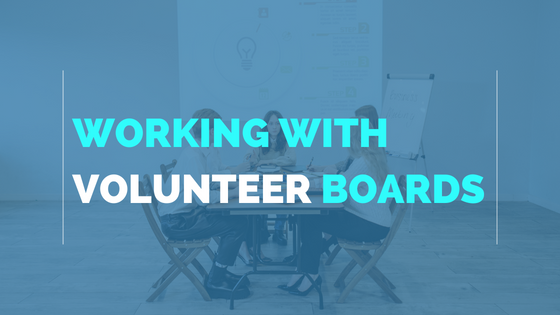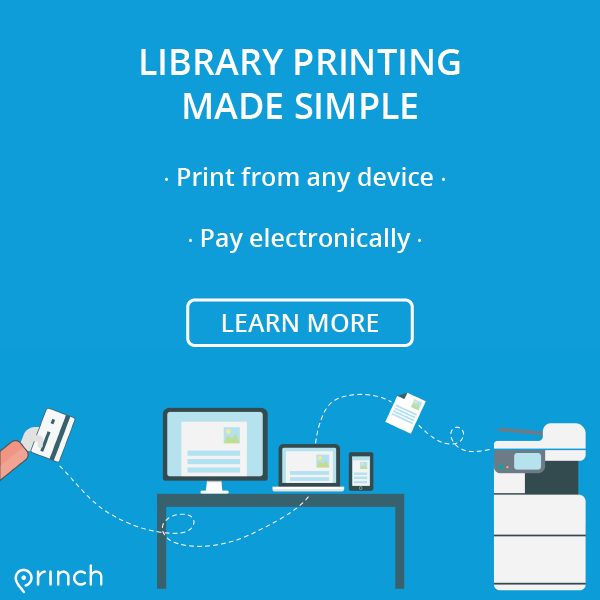In many library districts, the governance of the library is delegated to an appointed board of volunteers from the local community. These dedicated volunteers provide hundreds of hours of effort to support the library, but with any board of directors there can be challenges that need to be overcome. This is particularly true of a board made up of community volunteers that may be lacking in the governance and finance skills you would expect from traditional for profit board members.
In this week’s post, John Schaub, an experienced library board member, and Pany Aghili, a leadership consultant with significant experience in the not for profit sector, will share advice on how you can work with and get the most from your volunteer library boards.
Learn the key aspects of Princh! Watch our on-demand demos at your convenience and see what makes Princh such a simple solution. Watch our demos here.
Recruiting
As with any team, a strong recruiting process is essential for recruiting library board members. The systems in place to recruit library boards differ, but where it is possible, it behooves senior staff and the existing board to give as much input as possible on the candidates that will be recruited to the board.
The first reason is to simply ensure that you have a broad base of experience and abilities. Library boards can be asked to address complex issues ranging from Human Resources to Fundraising to potentially sensitive legal matters. Having a broad range of skills on the board will go a long way to make sure that the board as a whole has the capability needed to do the job. Maintaining an up to date skills matrix and sharing it with the people (typically civic government) who make the decision on recruiting is a great way to help insure you have the needed skills. Beyond just helping to focus the attention of the appointment body on the particular skills that are needed, sharing a skill matrix helps to remind the civic government of the fact that these are important roles and helps to steer them away from pure political appointments.
The second reason to take an active role in recruiting is to help attract high caliber candidates. Library boards rarely make the news and because of this many people who would be fantastic candidates might not even be aware they exist. Holding an open house for prospective board members, well in advance of the annual recruiting process, is a fantastic way to drive interest and help ensure that there is a surplus of qualified candidates in the pipeline. Beyond just recruiting for the board these sorts of events are a good way to find prospective donors as well.
Onboarding
Proper board member onboarding is key particularly if you have new board members who have never served on a board of directors before. There are a few key systems to put in place when onboarding new board members that will make the process much easier for the new member and help make them a productive and long serving member of the board.
Before the member even joins the board, it is a great idea to invite them to a meeting or two so they can get a sense of the flow of the meeting and develop at least a passing understanding of the issues of the day. Sitting at a formal board table and being asked to vote on potentially significant issues within a few hours of first joining a board can be very intimidating for the inexperienced. Attending an introductory meeting will go a long way toward easing the new member onto the board.
As well as attending an introductory meeting, the new board member should have a one on one with the chief librarian and board chair as well as any key staff. It is very hard to get to know someone in a minuted meeting so building those relationships ahead of time is key. Beyond just the relationship building, these meetings provide a chance to give the new member a tour of the facility and walk them through the board manual.
On the topic of board manuals, it is absolutely imperative that you have a well organized and up to date board manual preferably in print form and in a binder that allows easy access and updates. This manual should have all the board policies and procedures as well as contact information for all key individuals. Every new board member should be provided a copy at the beginning of their term and given a quick introduction by the board chair.
The final step we will recommend is assigning each new board member a buddy who has served on the board for a few years. This person can serve as the point of contact when the new member inevitably has questions about processes. This need not be a time consuming role. Simply being available to answer quick questions via email or grab a coffee before a meeting will go a long way to make the new member feel comfortable and welcome.
Engagement
Board engagement is often challenging for non for profit executives. This is often due to the disconnect between the directors motivation to join a board and the actual work that the board does on a day to day basis. Directors join a board because they are passionate about the mission of the organization and want to contribute. Governance, however, is removed from day-to-day operation and demands strategic, financial, and legal discussions that can be dry at times. Another reason for lack of board engagement can be the executives’ struggle to clearly connect the dots about the effect of good governance on the organization. This failure is partly because the connection is obvious to the executive, themselves, who live and breathe the work every day. And partly because executives are afraid of veering the conversation away from governance and into operations and ending up with a micromanaging board member.
There are a few proven strategies to engage your volunteer board members and create a high-performing governance board. The first key step is to build one-to-one relationships with each director. This starts with onboarding and should continue as an annual check in throughout their time on the board. A social gathering once or twice a year also goes a long way to build relationships between board members and senior staff. Be sure to focus real effort on the relationship with the board chair which is essential to a well functioning board.
The next step to ensuring an engaged and productive board is to make participation easy. To do this ensure the board package is easily and digitally accessible at least a week in advance of the meeting. This provides the directors with the time needed to prepare for the meeting discussions. Use an e-document to answer questions that are operational or outside of the agenda in advance of the meeting and make it accessible to all board members. All historical board material should be accessible in a single electronic portal for ease of use as nothing makes a meeting feel like wasted time faster than sitting around waiting for someone to find a key piece of information. Further to this point, make sure your board chair is well trained and has the confidence and capability to run an effective and well-structured meeting. And lastly, schedule meetings well in advance to improve attendance and participation.
To have productive meetings, use an agenda template that buckets each agenda item under the relevant duties of the board. To help keep the directors aware of the relationship between governance and on the ground accomplishments use a reporting template for your executive report that highlights the relationship between the operational accomplishments and the strategic priorities.
It is a great idea to start each meeting by having the directors share how they have advanced strategic priorities of the organization since the last meeting. This not only helps to get recognition for the contributions of the board members but provides some valuable social pressure on them to focus on delivering value. Do not forget to celebrate wins and acknowledge the contributions of your board.
Lastly when talking to the board both in formal meetings and informal one-to-ones answer operational questions by tying it back to the organization’s strategic, legal, or financial obligations. Making it clear to each board member how the work they do ties back to the on the ground success of the organization will help keep them engaged and avoid them drifting into the more operational concerns best left to staff.
Social Media and Media Contact
As part of each board member’s onboarding special focus should be spent reviewing the policies and procedures around media and social media. New board members need to understand the importance of not litigating controversial issues outside the boardroom and be prepared for the fact that they may be approached by members of the public in person or on social media and asked to comment on specific issues, many of which will be very operational in nature. Someone who has never encountered this before may be unprepared and quite stressed by the experience.
Beyond simply walking the board members through the communications policy if you are a larger library that can expect media coverage it is advisable to conduct periodic media training even if board members are expected to defer all communications to the staff.
Term limits and board progression
A well functioning board will have a regular stream of members coming and going. This injection of new ideas and fresh voices is absolutely vital to the functioning of a governance board but it needs to be managed effectively. The key consideration here is that the longest serving members of the board will inevitably be in the most senior roles so you need to spend time considering how you will replace them as they time out well before they leave.
The easiest way to prepare someone to step into the role of chair is to have them Chair a committee of the board ahead of time. Avoid the practice of having the Chair constantly running all the committee meetings. Sharing the workload not only makes the Chair’s life easier but helps give experience to future Chairs. Beyond just providing the opportunity for on the job training, consider sending your future Chairs to formal board governance training if you can. If time and budget allow for it, you should dedicate one meeting a year to a formal professional development topic. Finally, you should also be wary of having too limited of a succession plan as members might leave a volunteer board suddenly and with little warning due to changing personal circumstances.
If you would like to discuss further, you can reach out directly to John Schaub or Pany Aghili via their websites.
Author details:
John Schaub & Pany Aghili
If you would like to further discuss this topic you can contact them at their websites, https://www.johnschaub.ca/ and https://possibilitiesunlimited.ca/.
Recent posts
Green Libraries: How Sustainable Design is Shaping the Future of Public Libraries
In this week's Princh Library Blog post, recurring guest writer Sam L. Bowman discusses an ever so important topic: sustainable design and [...]
Librarians Supporting Digital Literacy in the Community
In this week's Princh Library Blog, Nina Grant covers why digital literacy is important, the variety of ways in which librarians are supporting [...]





Leave A Comment